Table of Contents
ToggleEconomic trends shape the world around us, often in ways that feel like a rollercoaster ride. One moment, everyone’s talking about a booming tech industry, and the next, it’s a sudden shift toward sustainable practices. Understanding these trends isn’t just for economists in stuffy suits; it’s for anyone who wants to navigate the wild waters of today’s market.
From the rise of remote work to the increasing demand for green energy, these trends can make or break businesses and even influence personal finances. So, buckle up and get ready to explore some fascinating examples of economic trends that are not only shaping industries but also redefining how we live and work. Who knew economics could be this entertaining?
Overview Of Economic Trends
Economic trends significantly impact various sectors and influence personal decisions. Understanding these trends reveals patterns that reshape markets, businesses, and lifestyles. Remote work exemplifies a major shift, allowing employees flexibility and companies cost savings. Green energy adoption highlights another trend, driven by sustainability demands and technology advancements.
Inflation rates fluctuate, affecting purchasing power and consumer behavior. Rising costs for goods and services make budgeting essential for families. Interest rates change, influencing borrowing and spending patterns. As rates increase or decrease, businesses adjust their strategies accordingly.
Consumer confidence serves as a key indicator of economic health. Higher confidence typically boosts spending, while lower confidence can lead to economic slowdowns. E-commerce growth signals a shift in retail landscapes, impacting logistics and supply chains.
In addition, globalization continues to connect markets, leading to the exchange of goods, services, and ideas. Trade agreements and tariffs directly affect businesses and consumers. Lastly, emerging technologies, such as automation and artificial intelligence, transform workplaces and job markets, creating new opportunities and challenges.
These trends illustrate the interconnectedness of various economic factors and their direct effects on everyday life. By staying informed about these trends, individuals and businesses can better navigate the complexities of the modern economy.
Types Of Economic Trends Examples

Economic trends can be categorized into short-term and long-term variations that affect industries and consumers. Understanding these trends provides insight into market behavior and influences decision-making.
Short-Term Trends
Short-term trends typically emerge from immediate market reactions and external factors. A common example includes seasonal spending patterns during holidays, where consumer purchases spike. Fluctuations in commodity prices often lead to short-term shifts, impacting industries reliant on raw materials. Economic policies or unexpected events, like natural disasters, can trigger quick changes in market response, altering supply and demand dynamics. Additionally, interest rate adjustments by central banks influence borrowing costs and spending behavior swiftly.
Long-Term Trends
Long-term trends signify broader shifts in the economy that evolve over time. Technological advancements, like the rise of digital platforms, reshape business operations and consumer interactions. Demographic changes, including aging populations, directly influence market demands and workforce availability. Sustained shifts toward sustainable practices reflect increasing awareness of environmental impacts on industries. Globalization also illustrates long-term trends by increasing interconnectivity among markets, facilitating trade and investment opportunities. These trends collectively provide a framework for long-range planning in both business strategies and personal financial decisions.
Key Economic Indicators
Economic indicators serve as vital signs of economic health. Monitoring these indicators helps understand shifts in the marketplace.
Gross Domestic Product (GDP)
Gross Domestic Product represents the total monetary value of all finished goods and services produced within a country during a specific period. Economists utilize GDP to gauge economic performance and growth trends. A rising GDP often signals economic expansion and increased consumer spending. Declining GDP, on the other hand, indicates potential economic recessions. Countries also assess GDP on a per capita basis to understand individual contributions to the economy. Notably, the GDP deflator adjusts nominal GDP for inflation, providing a clearer picture of real growth. Recent U.S. GDP growth displayed resilience, driven by strong consumer spending and business investments.
Unemployment Rates
Unemployment rates measure the percentage of the labor force that is jobless and actively seeking employment. These rates function as critical indicators of economic health and workforce stability. Higher unemployment rates suggest economic distress, affecting consumer confidence and spending habits. Conversely, lower unemployment rates typically correlate with economic vigor, indicating robust job creation and a healthy labor market. Tracking specific categories, such as long-term unemployment, reveals deeper insights into the labor force’s dynamics. Recent trends indicated fluctuations in unemployment rates due to various economic forces, including changes in technology and seasonal labor demands. Monitoring these rates assists policymakers in making informed decisions on economic strategies and workforce initiatives.
Real-World Economic Trends Examples
Understanding real-world economic trends requires examining both global and local contexts. Key examples highlight how these trends manifest across different regions and markets.
Global Economic Trends
Globalization plays a significant role in economic interactions. Trade agreements between countries often lead to enhanced market access and increased competition. Recent data shows that emerging markets are experiencing rapid growth, attracting foreign investments. Additionally, the transition to renewable energy sources reflects a collective response to climate change concerns, with countries investing billions in green technologies. Remote work has gained traction worldwide, leading to shifts in labor dynamics and urban planning. Consumer preferences favor sustainable products, encouraging businesses to adopt more eco-friendly practices. These trends shape collective economic landscapes across nations.
Local Economic Trends
Local economies feel the impact of broader economic shifts. For instance, cities with thriving tech sectors witness an influx of skilled workers and increased demand for housing. Inflation rates directly affect local purchasing power, influencing spending habits within communities. Small businesses adapt by offering online services to meet changing consumer behaviors. Additionally, local unemployment rates serve as critical indicators, reflecting workforce conditions and economic stability. Housing markets often adjust based on local demand, driving home prices up or down. Shifts in local economic activity can determine how effectively communities address challenges and capitalize on opportunities.
Analyzing Economic Trends
Economic trends provide insight into the health of markets and populations. Observing fluctuations in GDP reveals patterns in economic expansion or contraction. Low unemployment rates often indicate workforce stability, fostering consumer confidence and spending.
Shifts towards remote work demonstrate changes in employee preferences and company structures. Economic adaptations occur as businesses explore more flexible arrangements, benefitting from reduced overhead costs. Increasing adoption of green energy showcases a response to environmental challenges, while innovation in technology propels these changes forward.
Short-term trends capture immediate market responses, such as holiday spending spikes or commodity price adjustments. Likewise, long-term trends signify broader shifts like demographic changes and increased sustainability efforts.
Globalization links markets and creates new opportunities for trade, impacting consumer choices and local economies. Regional economic conditions reflect the effects of these global dynamics, with tech-driven regions attracting skilled workers.
Local businesses display adaptability in navigating these trends, responding to the evolving needs of consumers. Monitoring local unemployment rates serves as a key indicator of economic stability, showcasing the interconnectedness of global and local economies.
Investments in renewable energy have become central to many countries’ economic strategies, addressing both climate change and energy needs. Collectively, these economic trends shape individual financial decisions and business strategies, creating a comprehensive understanding of the modern economy.
Economic trends play a crucial role in shaping both market dynamics and individual choices. By staying informed about these trends, individuals and businesses can better navigate the complexities of the economy. The rise of remote work and the shift towards green energy illustrate how adaptability is essential in today’s environment.
Understanding key indicators like GDP and unemployment rates further empowers decision-making. As globalization continues to connect markets, recognizing local economic shifts can provide valuable insights into broader trends. Ultimately, being aware of these economic movements equips everyone to make informed financial and strategic decisions in an ever-evolving landscape.




